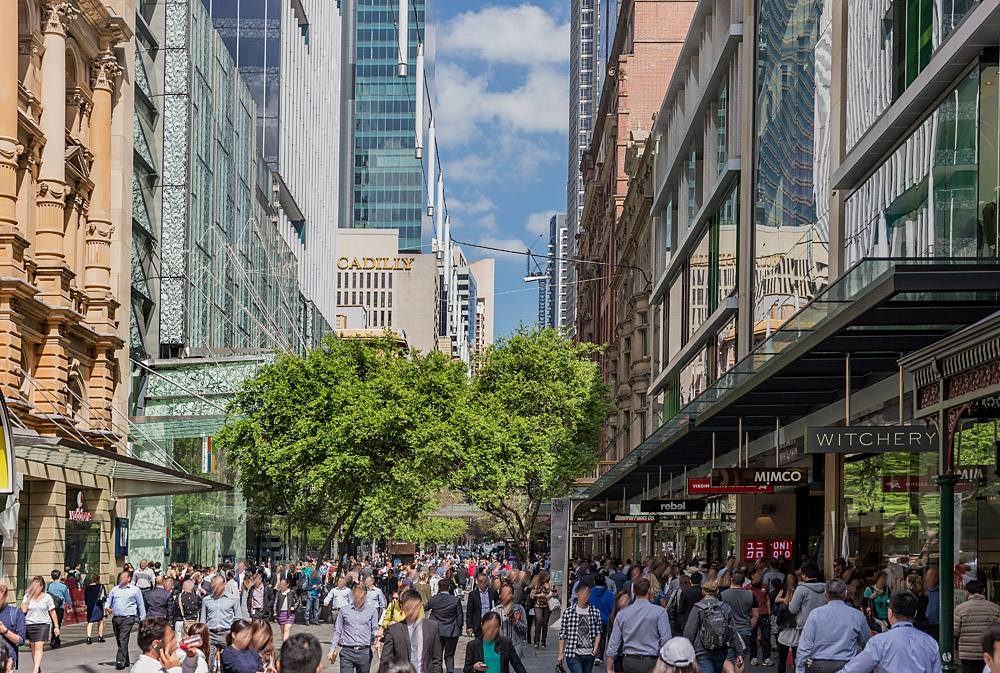This article is from the Australian Property Journal archive
HIGH population densities had little or no impact on trends in house value or rental appreciation over the past decade, analysis by CoreLogic shows, and only a minor relationship with unit values.
Australian Bureau of Statistics data shows Melbourne has the highest population density across the capital cities, at 521 people per square kilometres, followed by Adelaide (444 people) and Sydney (441 people).
CoreLogic’s analysis shows Sydney’s lower population density relative to Melbourne and Adelaide comes despite Sydney having a larger portion of medium to high-density housing stock – units comprise 39.5% of all Sydney dwellings compared with 33.4% in Melbourne – and generally smaller blocks of land. The median land area for houses sold over the past year, 569 sqm, was the second-lowest of any capital after Perth.
An important factor contributing to the lower population density across Sydney is the larger land area that comprises the metropolitan region. The Sydney metro area, as defined by the 2021 Greater Capital City Statistical Area (GCCSA) boundary, includes the Central Coast, the Blue Mountains, Penrith and Sutherland covering 12,369 square kilometres.
Sydney dominates the list of 20 highest-density SA2 locations, led by inner south locations such as Sydney (South) Haymarket, Chippendale, Zetland, Ultimo, Waterloo, Pyrmont, Potts Point and Darlinghurst, with Melbourne locations Melbourne CBD – North and Southbank – East coming in at one and two nationally.
CoreLogic’s analysis found the relationship between population density and rental growth is weak.
“Population density across the unit sector provides little explanatory value about unit rental growth over the past 12 months or the past 10 years. Areas with a high population density have shown slightly stronger rental appreciation over the past 12 months relative to lower population density areas, but slightly weaker growth over the past decade,” said CoreLogic research director, Asia Pacific, Tim Lawless.
“The relationship between density and appreciation in house rents is even weaker than seen across the unit sector, but the weak relationship runs opposite to that of units, where higher population densities have been associated with slightly weaker rental appreciation than areas with a lower population density over the past 12 months and slightly stronger over the past decade.”
Only two of the 20 highest-density SA2 locations across the country recorded a larger rise in unit rents over the past 12 months than the capital city benchmark – Sydney’s Chippendale (by 9.4%) and Hurstville-Central (by 11.7%).
The relationship between unit values and population density is more significant, with high-density unit markets generally showing a lower level of value growth over both the past 12 months, and past 10 years, with the longer-term relationship more significant. Lawless said this potentially reflected periods of higher unit supply that weighed on value appreciation.
Sixteen of the top 20 have recorded a lower annual rate of unit value growth over the past decade relative to the broader capital city trend. Over the past 12 months, nine of the top 20 have underperformed.
High population densities provide “virtually no explanatory power” for house values, Lawless said, with the coefficient of determination just .001 over the past 12 months and over the past decade.
“Over the long term, precincts with a high population density tend to show slightly stronger growth in unit rents, but softer rates of capital appreciation across the unit sector, while for houses there is hardly any relationship between population density and trends in rental or value appreciation,” he said.
“Stronger rental growth for units is unsurprising given the high level of amenity along with proximity to major employment nodes and academic facilities that is typical for high-density precincts.” They are also likely to be popular across a broader range of cohorts, including students, inner-city professionals, service workers and migrants.
Lawless said softer value growth despite generally high levels of population growth and strong rental demand may be attributable to the propensity for higher levels of new housing supply in these same precincts.
“New supply, especially across the high-rise sector, can be ‘bulky’ with the potential to deliver hundreds, if not thousands of new dwellings to a market in a relatively short space of time”




